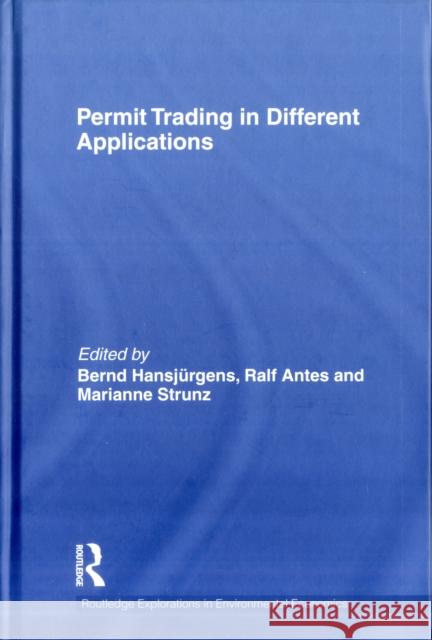Permit Trading in Different Applications » książka
Permit Trading in Different Applications
ISBN-13: 9780415551229 / Angielski / Twarda / 2011 / 338 str.
Permit Trading in Different Applications
ISBN-13: 9780415551229 / Angielski / Twarda / 2011 / 338 str.
(netto: 695,40 VAT: 5%)
Najniższa cena z 30 dni: 705,23
ok. 22 dni roboczych.
Darmowa dostawa!
Permit trading is an environmental policy instrument that has received increasing levels of attention over recent years. Coming from the field of air quality management, with the European CO2 emissions trading system being the most prominent example, it enters new fields of application, such as land use policy and biodiversity protection, water quality and water quantity trading. This book gives an overview of these recent developments and discusses the possibilities and limits of permit trading in environmental policies. The advantages of permit trading are not only seen with respect to economic efficiency, which leads to achieving the environmental target at minimum cost, but also with respect to the instrument's environmental effectiveness. By setting a cap for the overall emissions, a given environmental target can be met. This makes permit trading an interesting case for many environmental fields where safeguarding the environmental target plays a dominant role. Against this background, permit trading is discussed in environmental policy fields, where it has not been considered before, for example, land use management, biodiversity protection and water trading. Permit Trading in Different Applications analyses the properties of permit trading: its possibilities and limitations, its design options and its restrictions on a more general level. It demonstrates how lessons learnt in established policy fields like air quality management can be transferred to new and emerging fields of application. This collection will provide students and practitioners in environmental sciences and policy with valuable research into instrument choice and design with respect to permit trading.
This book analyzes the current picture for permit trading: one of the most influential environmental instruments to emerge in recent times. Its possibilities and limits, its successful design options and its restrictions will all be placed under the microscope, with a focus not only on âtraditionalâ fields of application including air quality and climate policy, but new and emerging fields in which permit trading has been brought to bear: biodiversity, land use policy, water policy amongst them. The authors have set out with the following intentions:
- to demonstrate how lessons learned in established policy fields can be transferred to new fields of application
- to fill specific research gaps in instrument choice and instrument design with respect to permit trading in emerging fields of application
- to contribute to instrument choice in environmental policy by delivering a comparative analysis of market-based instrument permit trading.
The primary focus will be on practical and empirical analyses of existing and emerging permit trading schemes and the majority of the contributions are of an empirical nature. However, the book will be supplemented by analytical-theoretical considerations including mechanism design and implementation issues. An overview chapter summarize the central messages of the chapters in a comparative way and helps fill a substantial gap in the existing literature on permit trading.











